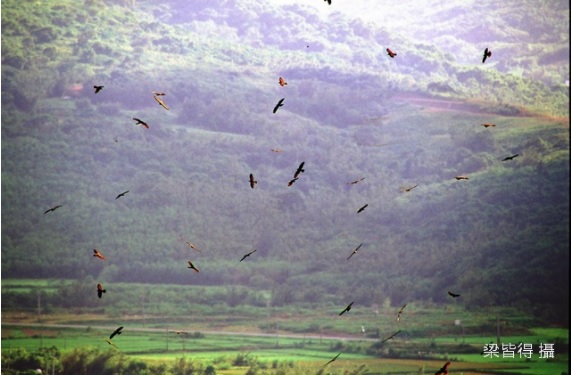
The Raptor Research Group of Taiwan was established in 1994 and established the raptor rescue station in 2017, which was a rescue station to specialize in raptor rescue in Taiwan. The rescue station primarily receives injured raptors from areas north of Taoyuan, including the greater Taipei area and Yilan. The raptors are given proper care and rehabilitation and then returned to the wild.
As we entered the Raptor Research Group’s center hidden in the alleys of Beitou, we saw that apart from office space for employees, the majority of the space was dedicated to veterinary care, including a medical treatment room, wards, and rehabilitation space. In the four years since the establishment of the aid station, the group has rescued over 500 raptors. On the day of the interview, the rescue station was helping 20 hospitalized raptors, including 7 crested goshawks, 5 collared scops owls, 3 crested serpent eagles, 1 tawny fish owl, and 4 black-winged kites that were raised from fledglings. As one can imagine, the rescue station is rather busy and the veterinarians are kept on their feet from morning to evening.
Veterinarian Wang Ling-Min, director of the raptor rescue station, graduated from the Department of Veterinary Medicine, NCHU. After she graduated, she worked at the Endemic Species Research Institute wildlife rescue center for more than six years. She then traveled to the University of Minnesota to work in The Raptor Center, where she learned many skills related to the rescue, care, and rehabilitation of raptors. As a member of the Raptor Research Group, she proposed to establish a raptor rescue center, like The Raptor Center, in Taiwan. Following this, the Raptor Research Group successfully raised the required funds and the establishment of the raptor aid station was approved by the board of directors.
Since raptors cannot talk, the medical staff must use what they see to judge the conditions, injuries, and environments of the raptors to speculate the reasons for the raptors’ injuries. In urban areas, the most common causes for injured raptors include car accidents, collisions with windows, and poisoning, as well as fledglings falling to the ground while still learning to fly and are picked up by members of the public. Wang Ling-Min pointed out that if we see a fledgling on the ground next to the road, these birds may not need our help.
Taking these healthy fledglings home is akin to kidnapping and the mother will not be able to find her children. She suggested that if we see a fledgling on the ground, we should first assess their physical and mental condition. If they are not injured and seem to be in good spirits, move them to a relatively safe location so that they can wait for their mother. If they seem to be injured, please take note of the location then report the bird. The medical staff will return them to the original location after treating their injuries.
If the rescuer does not record where the fledgling was found, how will the raptor rescue station handle the situation? Wang Ling-Min stated that because raptors are not very good at math, they are often unclear how many children they have. So, other raptors of the same species will act as surrogate mothers. However, not all raptors of the same species can become surrogate mothers. First, the rescued raptor must be of similar age to the other children of the surrogate mother. Secondly, the number of children each species of raptor cares for at a time is different. For example, the crested goshawks only mothers up to two baby birds. A crested goshawk which already has two babies is unsuitable to be a surrogate mother.
Wang Ling-Min also reminds the listener of the harm to wildlife posed by glue traps for rats. The glue traps do not only capture rats and mice, they also catch lizards, snakes, squirrels, and other animals. Glue traps are non-discriminant traps. The aid station has received injured raptors that were trying to eat the animals caught in the glue traps. The raptors were also glued to the trap, which causes skin lacerations, massive feather loss, and even bone fractures.
The treatment for raptors caught in glue traps is very troublesome. Wang Ling-Min explained that the veterinarian must first administer anesthetics so that the raptor will fall asleep before they can remove the glue. This is often not a one-time process. The veterinarian must wait a few days, when the condition of the raptor is stabilized, before they can repeat the process two or three more times to completely remove the glue. Some raptors may require longer periods of time to recover because of extensive feather damage, other injuries, or bone fractures. Therefore, she suggested that people who wish to exterminate a rodent problem should consider using cage traps or other novel rodent traps. Listen to the episode to learn about the different aspects of raptor rescue, as told by Director Wang Ling-Min of the Raptor Research Group of Taiwan.
(The text and photos have been provided by Director Liang Chieh-Te. All rights reserved)
Podcast on Demand



 中
中